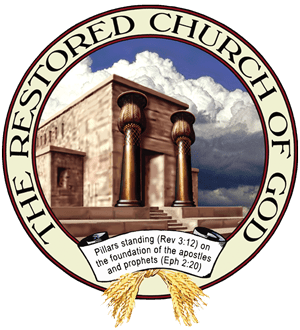In the minds of some, the apostle Paul’s question seems to be, “Why were they baptized for the dead, if the dead rise not?” But this view (and the practice that results from it) is based on an improper understanding of the scripture. It was neither taught by Christ or any of the apostles, nor followed by the New Testament Church. It was first brought into professing Christianity around A.D. 150 by Marcion, a man who had devised his own religion, establishing his own church in Rome in A.D. 144.
God’s Word plainly teaches that baptism must be preceded by repentance (Acts 2:38) and belief (Mark 16:16; Acts 16:31, 33). Since “the dead know not any thing” (Ecc. 9:5), they are incapable of repenting or believing. Baptism is for the living, as a symbol of our acknowledgement of our sins. When baptized, one figuratively dies with Christ in a watery grave. After rising out of that “grave,” we live a new (righteous) life through Christ and the power of the Holy Spirit within us (Rom. 6:4; 8:9; Gal. 2:20).
Baptism is also symbolic of the resurrection of the dead. To rise from the watery grave is to acknowledge belief in the resurrection (Rom. 6). To surrender to Christ now—to crucify the self now—to be baptized—would be foolish unless there is a future resurrection. Without the hope of the resurrection, one might as well live in this fashion: “…let us eat and drink; for tomorrow we shall die” (Isa. 22:13; I Cor. 15:32). As Paul also stated, “…if there be no resurrection of the dead…we are of all men most miserable” (I Cor. 15:13, 19).
The meaning of verse 29 now becomes clear. The entirety of I Corinthians 15 addresses the resurrection. Paul uses the example of baptism as one proof that there is a coming resurrection of the dead. By their actions, those being baptized expressed their hope of a resurrection. This verse was simply translated incorrectly from the original Greek text.
The Greek word translated “for” is huper, the same word translated “of” in the following scripture: “For it is God which works in you both to will and to do of His good pleasure” (Phil. 2:13). In this verse, huper cannot possibly mean “instead of.” It would not make any sense to say, “For it is God which works in you both to will and to do instead of His good pleasure.” This verse, properly translated, states, “God works in you both to will and to do for the realization of His good pleasure.” What is God’s “good pleasure”? Christ stated, “It is your Father’s good pleasure to give you the kingdom” (Luke 12:32). God works in us “in the hope of” one day giving us His kingdom!
Therefore, Paul is not writing about being baptized “in the place of,” “on behalf of,” or “for” the dead. According to the context of I Corinthians 15:29, huper should properly be translated “for the hope of,” as follows: “Else what shall they do which are baptized for the hope of the dead, if the dead rise not at all? Why are they then baptized for the hope of the dead?”
What is the hope of the dead? The Resurrection! In this verse, Paul is talking about baptism—arising from a watery grave—which symbolizes the hope of the resurrection. He is in no way instructing Christians to be baptized for the dead.


















